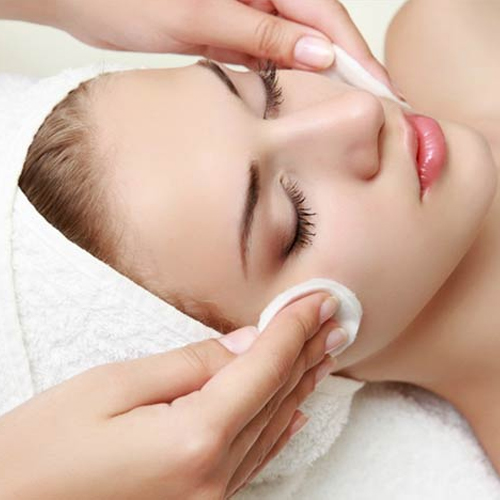Skin polishing is a cosmetic treatment designed to enhance the texture and appearance of the skin by exfoliating dead skin cells and promoting a smoother, more radiant complexion. This non-invasive procedure can improve skin tone, texture, and overall glow, making it a popular choice for those seeking a quick skin refresh. This guide explores what skin polishing involves, its benefits, and what you can expect from the treatment.
What is Skin Polishing?
Skin polishing is a cosmetic procedure that involves the use of specialized techniques or products to exfoliate the outer layer of the skin, removing dead skin cells and impurities. The goal is to reveal fresher, smoother skin beneath and enhance the skin's natural radiance.
How Does Skin Polishing Work?
-
Cleansing: The treatment area is cleansed to remove any makeup, dirt, and impurities from the skin's surface.
-
Exfoliation: Exfoliation is performed using various methods, which may include mechanical exfoliation (such as microdermabrasion), chemical exfoliation (such as enzymes or acids), or a combination of both. This process helps to slough off dead skin cells and improve skin texture.
-
Polishing: After exfoliation, a polishing agent or serum may be applied to further smooth and brighten the skin. This step often involves massaging the skin to enhance circulation and improve the overall glow.
-
Moisturizing and Protection: The treatment is completed with the application of a moisturizer and sunscreen to hydrate the skin and protect it from sun damage.
Types of Skin Polishing Treatments
-
Microdermabrasion
- How It Works: Uses a device that sprays tiny crystals onto the skin or employs a diamond-tipped wand to gently abrade the outer layer of skin. This method removes dead skin cells and stimulates collagen production.
- Benefits: Provides immediate smoothing and brightening effects, improves skin texture, and can reduce the appearance of fine lines and acne scars.
-
Chemical Peels
- How It Works: Involves applying a chemical solution (such as glycolic acid, salicylic acid, or lactic acid) to exfoliate the skin. The solution helps to dissolve dead skin cells and promote cell turnover.
- Benefits: Can target specific skin concerns such as pigmentation, acne, and fine lines, and provide a more even skin tone and texture.
-
Enzyme Peels
- How It Works: Uses natural enzymes (such as papain from papaya or bromelain from pineapple) to break down dead skin cells and exfoliate the skin gently.
- Benefits: Provides a milder exfoliation compared to chemical peels, making it suitable for sensitive skin.
-
Polishing Masks
- How It Works: Involves applying a mask that contains exfoliating ingredients, such as alpha hydroxy acids (AHAs), beta hydroxy acids (BHAs), or physical exfoliants. The mask is left on for a specific period before being removed.
- Benefits: Offers both exfoliation and hydration, leaving the skin smoother and more radiant.
Benefits of Skin Polishing
-
Improved Skin Texture: Removes dead skin cells and smooths the skin’s surface, reducing roughness and uneven texture.
-
Enhanced Radiance: Brightens the complexion by removing dull, dead skin and promoting a natural glow.
-
Reduced Appearance of Imperfections: Can help minimize the appearance of fine lines, acne scars, and hyperpigmentation.
-
Increased Skin Hydration: Enhances the skin’s ability to absorb moisturizers and other skincare products, leading to better hydration.
-
Boosted Circulation: Stimulates blood flow and collagen production, contributing to overall skin health and rejuvenation.
What to Expect Before, During, and After a Skin Polishing Treatment
-
Before the Treatment
- Consultation: Discuss your skin concerns and goals with a practitioner. They will recommend the most suitable polishing method based on your skin type and needs.
- Preparation: Follow any pre-treatment instructions, such as avoiding certain skincare products or medications.
-
During the Treatment
- Application: The chosen exfoliation and polishing methods are applied to your skin. You may experience mild discomfort or tingling, depending on the treatment.
-
After the Treatment
- Recovery: The skin may be slightly red or sensitive immediately after the treatment. Any redness or sensitivity usually subsides within a few hours to a day.
- Aftercare: Follow the aftercare instructions provided by your practitioner, which may include avoiding sun exposure and using gentle skincare products. Hydrating and moisturizing the skin is essential.
-
Results: Immediate improvements in skin texture and radiance are often noticeable. Continued benefits, such as enhanced smoothness and even tone, become more apparent with ongoing treatments.
Considerations and Risks
- Skin Sensitivity: Post-treatment skin may be sensitive, so it’s important to use gentle products and avoid harsh treatments.
- Sun Protection: The skin may be more susceptible to sun damage after polishing. Use sunscreen diligently to protect your skin.
- Consultation: Always consult with a qualified practitioner to ensure the treatment is suitable for your skin type and to receive personalized recommendations.


